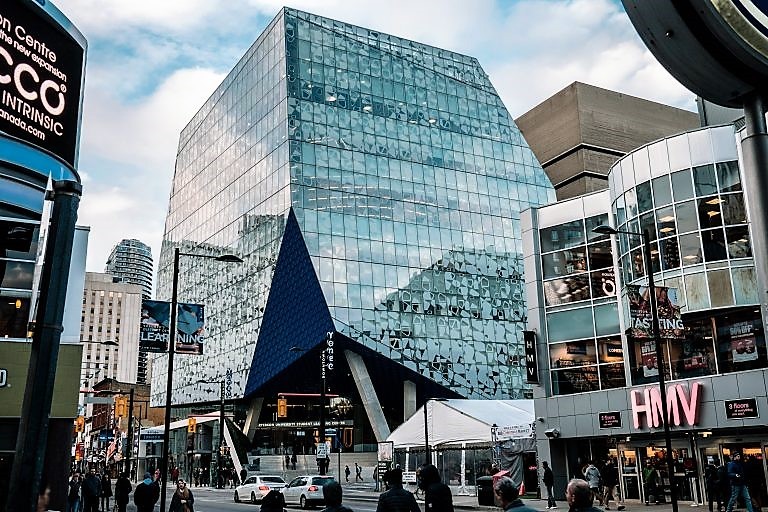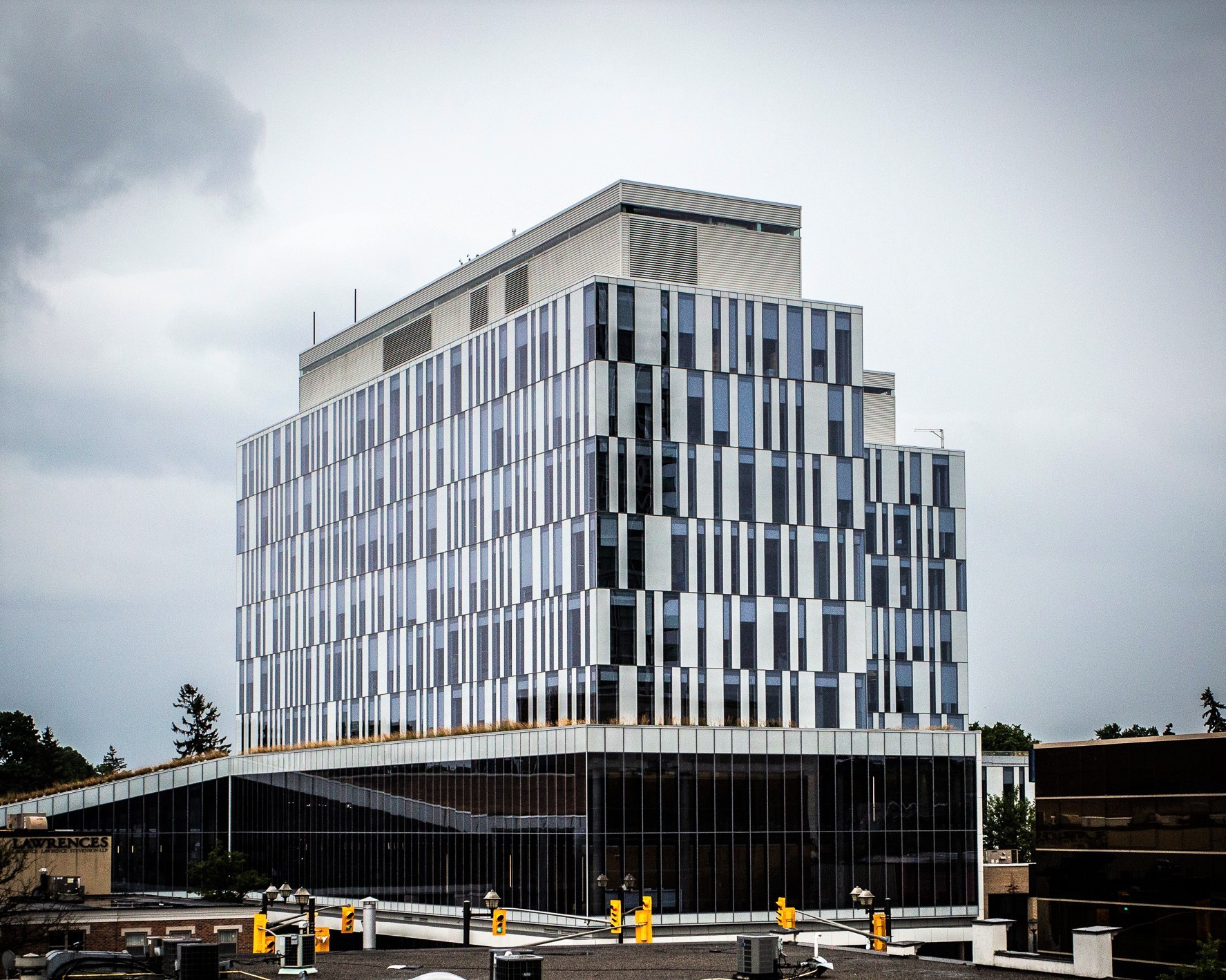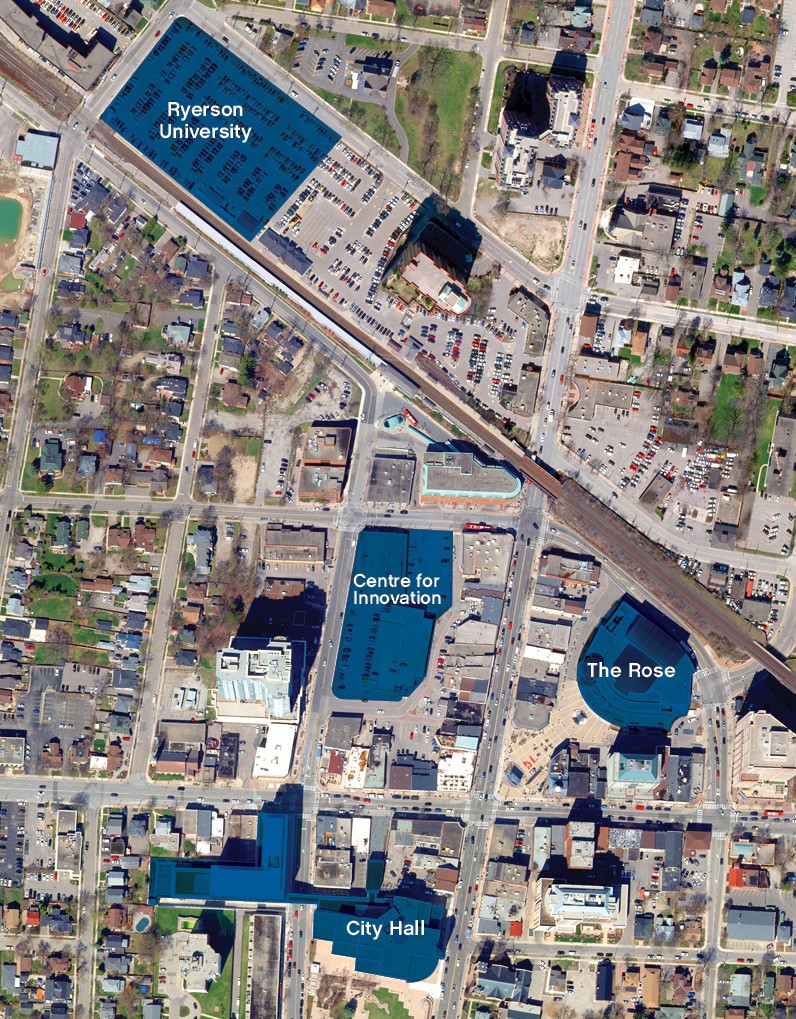
Brampton and Ryerson plan bold partnerships after Ford's funding cut forced university to pull out of campus project
If Mayor Patrick Brown has proven one thing over the past 12 months, it’s this — he doesn’t care if the chips are down. While the original plan for the downtown Ryerson University campus is no longer on the table, the city and Ryerson are moving ahead on other parts of their planned collaboration, and Brown says a campus in some form is still being pursued by the city.
On Wednesday, council moved to start work on a memorandum of understanding outlining what’s needed to create the planned Ryerson-led Innovation Hub and Cybersecure Catalyst in downtown Brampton, in addition to the university’s recently launched Chang School of Continuing Education, which is currently being housed in City Hall’s West Tower.
Asked whether there are plans to someday build a campus, Brown said unequivocally, “of course, and that is what Ryerson is saying and that is what the city is saying.”
“We’re working with multiple academic partners. Hundred percent we are committed to campuses of some sort, an academic footprint of some sort in Brampton. That’s why council is so committed to this, that’s why we’re having Ryerson, Sheridan, Algoma all make presentations at council despite the province not being part of the solution.”
Brown has made clear that economic development, the attraction of major investment in the city to create jobs and other opportunities while strengthening the city’s financial base, is a top priority of his, as outlined last week in his State of the City address. A strong university presence, which has been lacking in Brampton — the largest Canadian city without a stand-alone university campus — is a key to Brown’s economic development plans.

Ryerson Provost Glenn Craney
Ryerson Provost Glenn Craney, who appeared at council in November — amid fallout from the provincial government’s abrupt cancellation of its $90-million pledge toward a Ryerson extension campus to be built near the Brampton GO station — was back at Wednesday’s committee of council meeting, speaking once again about the city’s partnership with the university.
The November meeting raised hopes that the campus would still get built somehow with Ryerson’s involvement. But last month, The Pointer reported that Johanna VanderMaas, public affairs manager for Ryerson, had said in an emailed statement, “as you know, the provincial government decided to not proceed with the planned expansion in Brampton — there will not be a branch of Ryerson opening in Brampton.”
When asked to clarify why Ryerson was pulling out of the campus plan, VanderMaas responded that “There was a plan for a Ryerson building near the GO Train station, which was cancelled when the government announced the cancellation of funding for the campus expansion.” The previous Liberal government made the $90 million commitment after awarding the Ryerson-Brampton campus project in response to a provincial proposal call to expand university education in the GTA. But the Ford government cancelled the funding commitment, citing the province's dire financial picture, a day after the municipal election in October.
Back in November, after Ford's shocking announcement, Craney said at an emergency council gathering to address the matter that “There are many parts to … the partnership between Ryerson and Brampton.” He indicated the university was trying to salvage the campus plan at the time and was focused on key academic components that could still be delivered in Brampton to foster the city’s much-needed post-secondary expansion.
Ryerson began offering initial classes for an extension of the Chang School, Ryerson’s continuing education branch, in downtown Brampton last month. At Wednesday’s meeting, Craney said he was “delighted to see there are 30 students in that program.”

City Hall's West Tower, currently the house of the Chang School
He, along with Mohamed Dhanani, special advisor to Ryerson’s president, and Charles Finlay, executive director of the cybersecurity catalyst, reaffirmed a commitment to help Brampton “become the cyber security capital of Canada,” as Dhanani put it.
Dhanani emphasized the desire to make Brampton a vital link in the Toronto-Waterloo Innovation Corridor — a major talking point for Brown’s predecessor, former mayor Linda Jeffrey.
“The reality is, there is a lot happening in Toronto and there is a lot happening in Waterloo. There is not really a lot happening in between, and we think this is a huge opportunity.”
Until this week, the Innovation Hub and Cybersecure Catalyst were both nebulous concepts in the minds of most observers. Residents and council finally got some specific details about what those projects will consist of.
It’s expected the Cybersecure Catalyst will be a new national centre for innovation and collaboration in cybersecurity, providing “professional training, research and development, commercial incubation and public education.” It will employ roughly 45 full-and part-time employees and the catalyst would aim to produce as many as 2,200 certified cybersecurity professionals working in Brampton, that would help some 60 yet-to-be established cybersecurity companies in the city scale up.
It has been proposed that the project receive $1 million of investment per year for five years drawn from the $50 million the city had approved for the original campus plan.
The envisioned Innovation Hub, to be housed, like the Chang School program, in the West Tower of City Hall, would employ more than 10 people and would provide a special career centre for students and employers and a lifelong learning centre for the public, with the aim of helping 60-plus startups in Brampton. Ryerson operates DMZ, touted as “the world’s leading university-led incubator for early-stage technology startups,” and plans to extend that innovation expertise to Brampton.
Slated to open this June, the Innovation Hub would draw from the same $50 million pot as the catalyst, pending approval of the city budget.
“What the Innovation Hub does is, it brings in people who have businesses and incubates them and builds them into companies,” Craney said.
The benefits of these projects, however important they may prove to be to the city economy, lag behind the projected benefits that the full-fledged satellite university campus in the heart of downtown was to have brought.

The originally approved locations for the downtown university campus and the innovation centre
An economic impact study for the City of Brampton completed by consultant urbanMetrics for the cancelled campus project predicted that spin-off benefits from student and visitor spending as a result of the university and Centre for Education and Innovation Collaboration (CEIC) would reach over $50 million annually. A campus with 5,000 students could yield as much as $492 million in gross economic output for the city.
The campus previously proposed to rise at Church Street West and Mills Street North, next to the downtown GO station, was expected to enrol 2,000 students in the first five years.
Approval of the concept prompted a historic investment from the former council, which pledged $50 million to support the campus over 10 years, along with allocating $100 million to partially fund a centre for education, innovation and collaboration (CEIC).
Prior to the province’s withdrawal of its funding commitment for the campus, the city was in the process of pre-approving architects for design of the CEIC, with plans to award the project’s design to a qualified firm before the end of 2018. It’s not clear whether any money was spent by the city during the pre-qualification process or if the province will pay for any costs that can’t be recovered as a result of its actions.
The $100 million to be spent on the CEIC was supposed to come from an external loan which the city had not yet withdrawn.
However, with the city and Ryerson committed to finding a path forward on a collaborative effort, Brampton may still see many of the hoped-for benefits.
Post-secondary institutions are a boon for economic development in sometimes less direct ways. “Universities, through their involvement in the international academic community, enhance the stature of the host communities,” said the initial economic impact analysis. It also pointed out that such institutions “play a key role in terms of establishing, sustaining and expanding industry clusters within their regions,” and “play a key role in generating tourism within a community through special events (and) connections to the global community.”
Email: [email protected]
Twitter: @mansoortanweer
Submit a correction about this story


